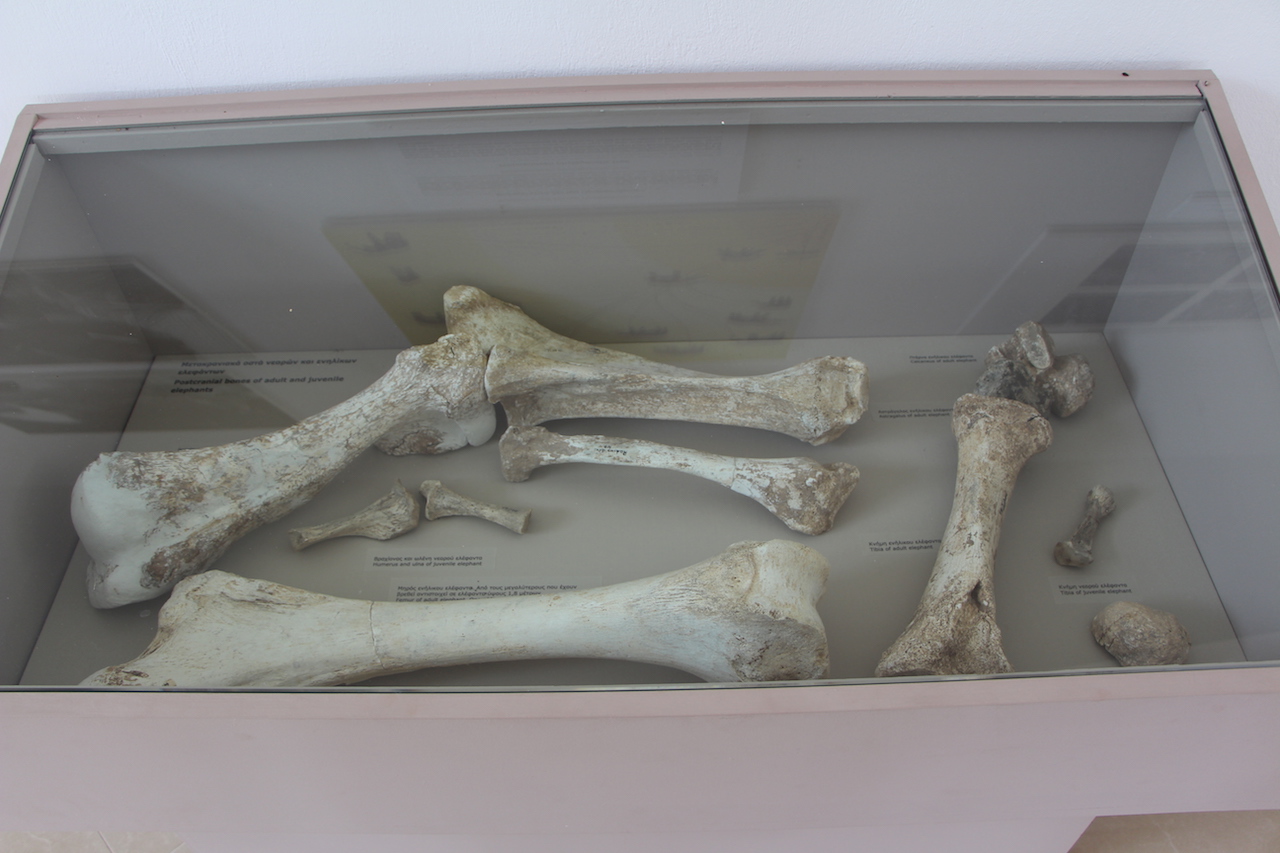The Charkadio Cave is a remarkable natural wonder located approximately two kilometers from the village of Megalo Chorio in the heart of Tilos. This intriguing cave is not only notable for its stunning geological formations but also for its exceptional paleontological significance. Discovered in 1971 by the geologist and speleologist Nikolaos Simeonides, the Charkadio Cave has become a focal point for researchers and visitors alike due to its extraordinary collection of fossil remains.
A Gateway to the Past
The Charkadio Cave’s importance stems from its impressive accumulation of paleontological remains, particularly those of dwarf elephants. These remains, uncovered through meticulous excavations, have captivated the scientific community and provided invaluable insights into the prehistoric fauna of the Aegean region. The discovery of these fossils has shed light on the unique evolutionary path of the Elephas tiliensis, a species of dwarf elephant that once roamed the island.
Since its discovery, the cave has been the site of extensive excavations, which began in earnest in 1971. These excavations, initially led by Nikolaos Simeonides, have revealed a wealth of fossilized bones from dwarf elephants, offering a glimpse into a long-extinct species that adapted to the island’s isolated environment. Alongside these impressive finds, the cave has yielded fossils of several other mammals, including deer, turtles, and a variety of micro-mammals. These discoveries have contributed to a broader understanding of the island’s prehistoric ecosystem and the diverse range of species that inhabited it.
Ongoing Research and Discoveries
Research at the Charkadio Cave is an ongoing endeavor, with continued excavations overseen by the Department of Historical Geology and Paleontology at the University of Athens. Under the supervision of George Theodorou, these excavations aim to uncover additional fossil remains and further unravel the mysteries of the cave’s prehistoric inhabitants. The cave remains a vital site for paleontological study, providing researchers with crucial data to understand the ecological and environmental conditions of ancient Tilos.
A Glimpse into the Past: The Charkadio Cave Museum
To make these fascinating discoveries accessible to the public, a small museum has been recently inaugurated near the cave. This museum showcases a range of artifacts and fossil specimens uncovered from the cave, offering visitors a unique opportunity to view and learn about the ancient creatures that once lived on Tilos. The exhibits highlight the significance of the Elephas tiliensis and other prehistoric species, providing educational insights into the island’s paleontological heritage.
Further Reading: Elephas Tiliensis
For those interested in delving deeper into the story of the Elephas tiliensis and its role in the cave’s history, I recommend checking out my dedicated post on the subject: Elephas Tiliensis. This post offers an in-depth look at the dwarf elephant species and its evolutionary journey, offering additional context to the fascinating discoveries made in the Charkadio Cave.
Conclusion
The Charkadio Cave is a true gem of paleontological research and a testament to the rich natural history of Tilos. Its extraordinary collection of dwarf elephant remains and other fossilized creatures provides a unique window into the island’s distant past. Whether you are a paleontology enthusiast or simply curious about the island’s ancient history, a visit to the Charkadio Cave and its accompanying museum offers a captivating experience that connects you with the prehistoric world of Tilos.














